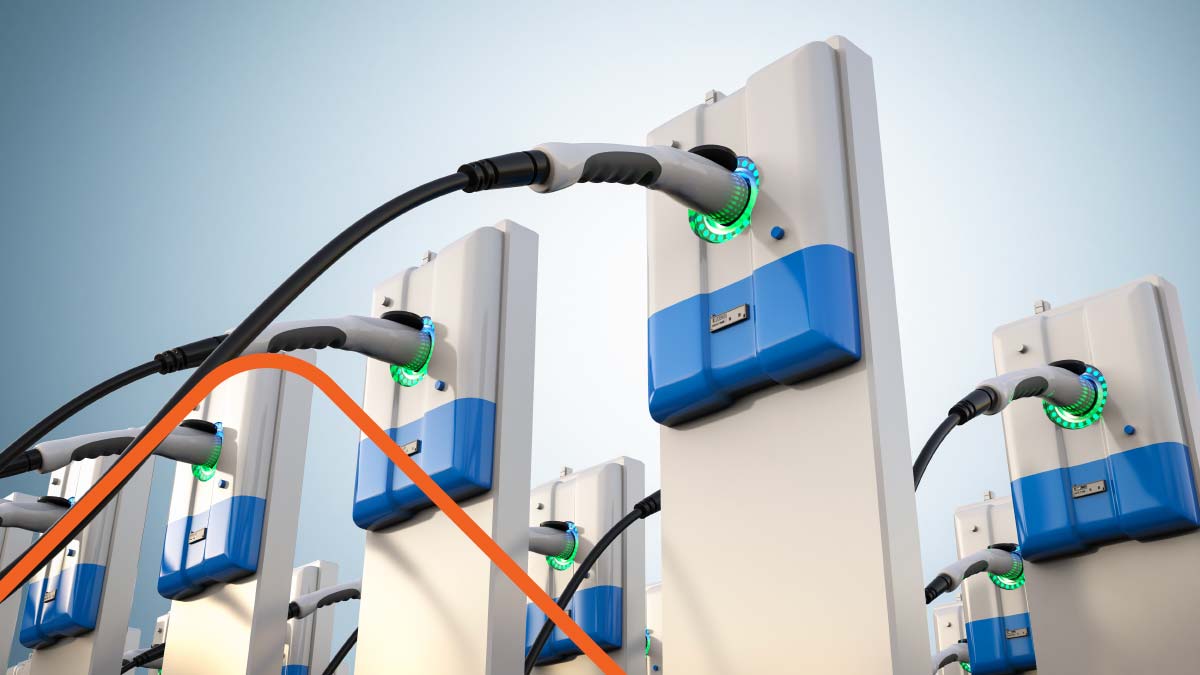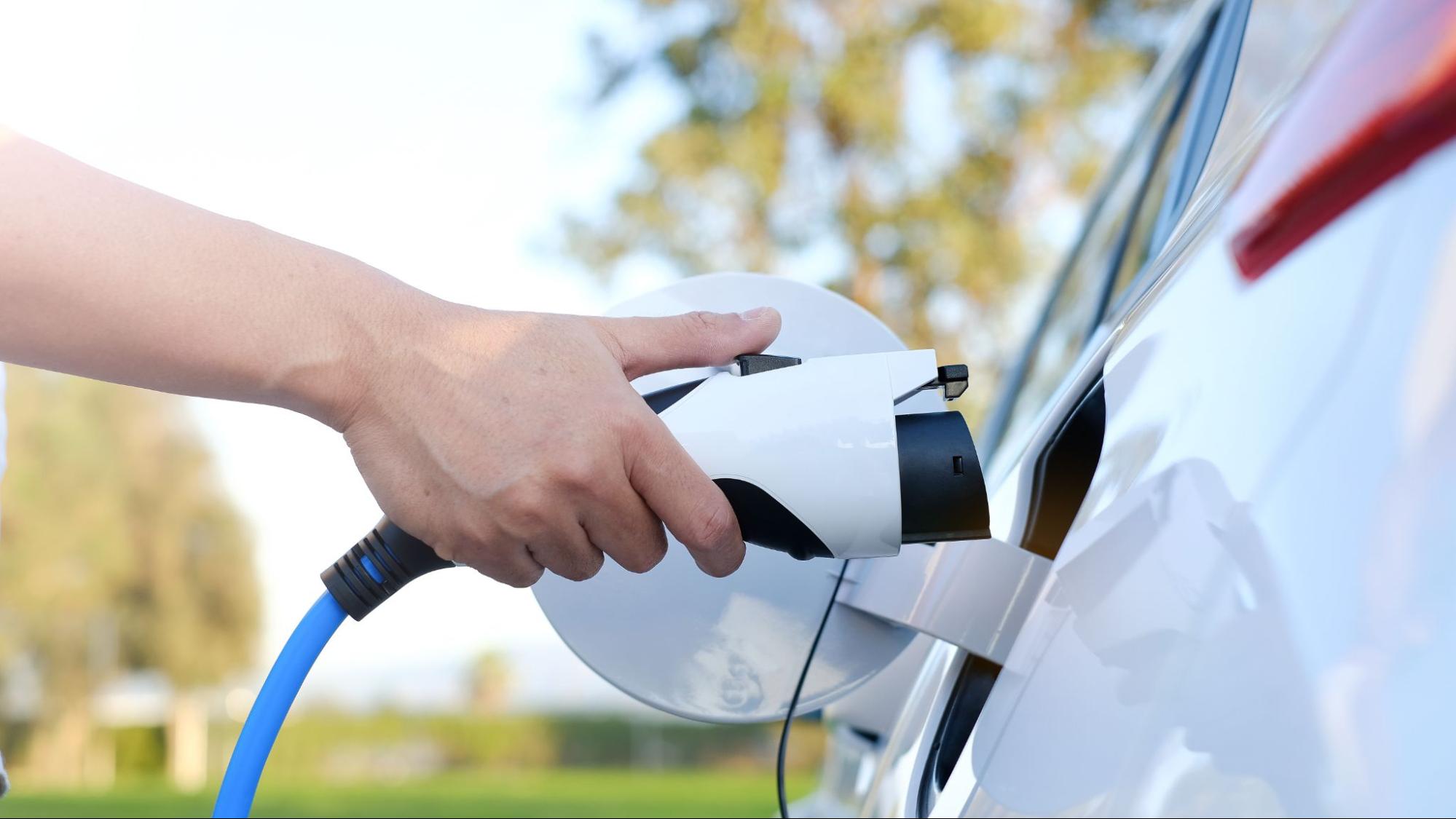Installing electric vehicle (EV) chargers in commercial settings is becoming increasingly popular as businesses strive to meet the growing demand for sustainable transportation options. Before describing the installation process, however, let’s examine factors that can significantly impact the cost. Understanding these variables will help businesses make informed decisions and support a smooth installation process. This article explores the key considerations and cost factors associated with commercial EV charger installation.

Understanding the basics of EV charger installation
Before exploring the cost factors, it’s essential to have a basic understanding of the different aspects of EV charger installation. Commercial EV chargers come in various types, each with its own unique requirements and installation process.
Installing an electric vehicle (EV) charger is not just about plugging in a device; it involves a comprehensive process that considers factors like power capacity, location suitability, and future scalability. By understanding the intricacies of EV charger installation, businesses can make informed decisions that align with their sustainability goals and operational needs.
Types of commercial EV chargers
There are primarily two types of commercial EV chargers: level 2 chargers and DC fast chargers. While level 2 chargers are slower, they are more cost-effective, making them perfect for overnight charging in workplaces or commercial settings where vehicles remain parked for extended periods. On the other hand, DC fast chargers provide a rapid charging option, suitable for high-traffic areas like shopping centers or highway rest stops where quick turnaround times are crucial. The choice of charger type will ultimately depend on the business’s specific needs and intended usage.
Moreover, within these categories, there are variations in power output, connector types, and smart charging capabilities that further tailor the charging experience to the needs of the business and its customers.
The installation process
The installation process typically involves several steps, such as site assessment, electrical system evaluation, permits, equipment procurement, and final installation. Each step requires careful planning and coordination for a successful installation.
Evaluation of factors such as available space, proximity to power sources, and user accessibility occurs during the critical initial phase of site assessment. Electrical system evaluation ensures that the existing infrastructure can support the charging equipment without overloading circuits or causing safety hazards. Permits and regulatory approvals are necessary to comply with building codes and local regulation. Equipment procurement involves selecting the right charging stations and accessories that meet the business’s requirements for charging speed, user interface, and network connectivity. Finally, the installation phase brings everything together, from mounting the chargers to connecting them to the power supply and configuring any software or network settings for optimal performance.
Key factors influencing installation costs
Various factors come into play when determining the cost of installing commercial EV chargers. It’s crucial to consider these factors during the planning stage to avoid any surprises or unnecessary expenses.
The installation’s location is one important factor to consider. Installing EV chargers in urban areas with limited access to electrical infrastructure may require more extensive and costly installation procedures than in more developed areas. Furthermore, factors such as soil conditions and environmental regulations can affect the overall installation cost.
Charger type and its impact on cost
As mentioned earlier, the type of charger selected affects the installation cost. Level 2 chargers generally have lower upfront costs compared to DC fast chargers. However, DC fast chargers often require more extensive electrical infrastructure upgrades, making them more expensive to install.
Furthermore, the brand and quality of the chargers can have an impact on the installation cost. High-quality, durable chargers may have a higher upfront cost but can result in lower maintenance and replacement costs in the long run, making them a more cost-effective choice.
Labor and installation costs
Factors such as the complexity of the installation, the number of chargers installed, and the location of the electrical panels influence labor and installation costs. Hiring experienced professionals to handle the installation supports quality workmanship and compliance with relevant electrical codes and safety standards.
Moreover, the availability of skilled labor in the area where the installation is taking place can also affect the overall installation cost. Areas with a high demand for electricians and electrical contractors may have higher labor costs, affecting the project’s total cost.
Electrical system upgrades
In some cases, the existing electrical system may need upgrades to accommodate the additional load of EV chargers. This can include upgrades to the main service panel, transformer, or wiring. The overall budget should factor in these upgrades, as they can significantly impact the installation cost.
Before installation, conduct a thorough electrical assessment to identify any potential upgrades needed to adequately support the EV chargers. This proactive approach can help avoid delays and additional costs during the installation process, supporting a smooth and efficient project completion.
Potential additional costs
While the primary focus is on the installation cost itself, it’s essential to consider potential additional costs that may arise throughout the life cycle of the EV chargers.
The cost of energy consumption is a significant factor to consider. Charging electric vehicles requires electricity, and this cost can vary depending on the location, time of charging, and the energy provider. Businesses should factor in these ongoing energy expenses when budgeting for EV charger installations.
Maintenance and repair expenses
Regular maintenance and occasional repairs are necessary to keep the EV chargers functioning properly. Businesses should budget for these ongoing costs, including preventive maintenance, replacement of worn-out components, and addressing any technical issues that may arise.
Moreover, investing in a maintenance plan or contract with a service provider can help streamline the maintenance process and promptly resolve any issues that may arise, minimizing downtime and maximizing the longevity of the EV chargers.
Permits and inspection costs
Obtaining the necessary permits and undergoing inspections is a crucial part of the installation process. The cost of permits and inspections can vary depending on the local regulations and authorities. It’s important to allocate funds for these expenses and comply with all relevant requirements.
Additionally, businesses should account for any potential costs associated with upgrading or modifying existing electrical infrastructure to support the installation of EV chargers. This may include upgrading electrical panels, wiring, or transformers to meet the power demands of the chargers and ensure safe and efficient operation.

Financing and incentives for EV charger installation
To help alleviate the upfront costs of EV charger installation, several financing and incentive options are available for businesses.
Installing electric vehicle (EV) chargers is a strategic investment for businesses looking to attract environmentally conscious customers and employees. Beyond the environmental benefits, offering EV charging stations can enhance a company’s reputation as a forward-thinking and sustainable organization.
Government grants and incentives
Government entities at the federal, state, and local levels often provide grants or incentives to encourage businesses to invest in sustainable infrastructure. These financial assistance programs can significantly offset the installation costs, making EV charger installation more financially feasible.
Furthermore, government incentives for EV charger installation can vary based on the location and the scale of the project. Some programs may offer tax credits, rebates, or even expedited permitting processes to shorten the installation timeline for businesses.
Private sector financing options
Private financing options, such as loans or leasing programs, can also help businesses overcome the initial investment barrier. These programs offer flexible repayment terms and may include additional services, such as maintenance and support.
Collaborating with private financing partners can make the upfront costs more manageable and provide businesses with access to expertise in EV charger technology and installation. This partnership approach can align the chosen EV charging solution with the business’s long-term sustainability goals and operational needs.
Cost-saving strategies for EV charger installation
In addition to exploring financing and incentive options, businesses can implement cost-saving strategies throughout the installation process.
One effective cost-saving strategy is to consider the location of the EV charger installation. By strategically placing chargers in convenient and easily accessible areas, businesses can minimize the need for extensive electrical work and reduce installation costs. Furthermore, locating chargers in high-traffic areas can help maximize usage and potentially generate additional revenue streams.
Choosing the right charger for your needs
An in-depth assessment of the specific charging requirements will help businesses select the most suitable charger type. By choosing a charger that aligns with the anticipated demand and future growth projections, businesses can avoid unnecessary expenses associated with overcapacity or insufficient charging capability.
Furthermore, businesses should consider the compatibility of the chosen charger with existing infrastructure and vehicles. Options for chargers that support various plug types and charging standards can enhance flexibility and accommodate a wider range of electric vehicles, ultimately increasing the usability and efficiency of the charging network.
Planning for future expansion
Taking future expansion into account during the installation process can potentially reduce the costs associated with retrofitting or modifying the electrical system later on. It’s important to consult with professionals who can design a system that allows for scalability and future-proofing.
Moreover, integrating smart charging technology and software solutions into the initial installation can streamline operations, optimize energy usage, and provide valuable data insights for further cost-saving opportunities. By investing in intelligent charging infrastructure from the outset, businesses can enhance the overall efficiency and sustainability of their EV charging facilities.
Conclusion
Commercial EV charger installation costs can vary significantly depending on a variety of factors, such as charger type, labor and installation costs, and electrical system upgrades. However, by carefully considering these factors, exploring financing and incentive options, and implementing cost-saving strategies, businesses can navigate the installation process more efficiently and mitigate potential expenses. Investing in commercial EV chargers not only promotes sustainability but also positions businesses as leaders in the clean transportation revolution.







